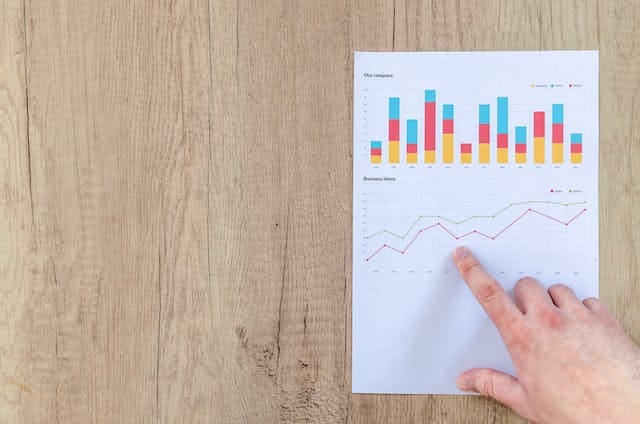Economic Recovery Strategies: Positioning Your Finances for Growth
Position your finances for growth with our guide on Economic Recovery Strategies. Unlock insights to navigate uncertainties and thrive in the evolving economic landscape

Navigating the economic landscape as a business owner or financial manager can often feel like a ride with no predictable endpoints, especially during times of turbulence and recovery. As we emerge from a global economic downturn, crafting a solid recovery plan is essential for positioning your finances for sustainable growth. In this comprehensive guide, we will explore actionable strategies to stabilize your financial standing and build a foundation for success in the months and years to come.
Assessing Your Financial Situation
Understanding where you currently stand is the crucial first step towards economic recovery. It involves a deep dive into your financial reports, projections, and operational statistics. Facing your numbers head-on allows for poignant strategies to be devised and pivots to be executed swiftly.
Conducting a Thorough Financial Assessment
Begin by analyzing your income statements, balance sheets, and cash flow statements, comparing them to pre-downturn figures to identify variances. This assessment should also involve a scrutiny of current assets, liabilities, and equity to determine your financial health objectively.
Identifying Strengths and Weaknesses
With data at hand, sift through to highlight areas where your business excels and those that need attention. Celebrate wins and leverage your strengths, but also set plans to bolster areas of concern. Whether it's enhancing customer retention or reducing high debts, every action should be aligned with your analysis.

Creating a Recovery Plan
A sound plan sets the course for recovery. It should encompass short-term tactics and long-term strategies, providing a roadmap with clear milestones to measure your progress.
Setting Realistic Goals
Construct goals that are Specific, Measurable, Achievable, Relevant, and Time-bound (SMART). Whether it's cutting costs by a certain percentage or increasing revenue through new channels, ensure they are within your control and have a clear framework for evaluation.
Developing a Timeline for Implementation
Time is of the essence when it comes to recovery. Define a timeline that includes immediate action items, as well as those that are to be implemented over the next quarter, half-year, and year.
Prioritizing Financial Strategies
Not all strategies will yield the same level of impact. Prioritize those that will deliver the most significant financial benefit or that address potential risks. This may involve immediate cash flow management, followed by debt restructuring and then user acquisition strategies.
Cost-Cutting Measures
Efficient operations correlate directly with a company's financial stamina. Identifying and slashing unnecessary expenditure without compromising on quality can make the difference between survival and growth.
Identifying Areas for Cost Reduction
Review your P&L statement to pinpoint high-cost areas. Are there unnecessary subscriptions that can be canceled? Can you renegotiate vendor contracts for better terms? Break down each line item to find potential savings.
Implementing Cost-Saving Measures
Once you've identified these areas, act swiftly and decisively. This may entail reevaluating staffing models, implementing energy-saving initiatives, or adopting digital tools that streamline processes and reduce overhead.
Streamlining Operations
Operational efficiency is critical. Assess your supply chain for inefficiencies, consider logistics and distribution restructuring, and automate administrative tasks to free up labor and resources for more critical business areas.
Revenue Generation Strategies
Diversifying your income streams can help to de-risk your business and prepare you for market fluctuations. Engage in a strategic approach to finding new sources of income and expanding your customer base.
Diversifying Income Streams
Brainstorm ways in which you can monetize your existing assets or expertise in novel ways. Can you offer consulting services alongside your product line? Are there subscription models that would appeal to your customers?
Identifying New Market Opportunities
Market dynamics are in constant flux; staying updated is crucial. Research and identify trends or untapped markets that align with your offerings and can present new revenue opportunities.
Building Strategic Partnerships
Developing partnerships can provide access to new markets, resources, and customer segments. Forge alliances that are aligned with your brand values and long-term business objectives.
Optimizing Cash Flow
Cash is king, they say, and never is that truer than in recovery periods. Understanding your cash flow is fundamental to ensuring survival and providing a platform for growth.
Managing Accounts Receivable and Payable
Accelerate your accounts receivable by shortening payment terms, incentivizing early payments, and staying on top of collections. Simultaneously, optimize accounts payable by negotiating payment terms and taking advantage of vendor discounts.
Forecasting Cash Flow
Use historical data to forecast cash flow and to anticipate any shortfalls or surpluses. This exercise allows you to manage your working capital effectively and to make informed decisions about investments and operations.
Implementing Effective Cash Flow Management Techniques
Cash flow management techniques like strict inventory control, maintaining a cash reserve, and minimizing idle cash can significantly improve your liquidity, providing a cushion in times of economic uncertainties.

Accessing Financial Support
In some instances, additional financial assistance might be necessary for recovery. Familiarize yourself with the support systems available from governments, financial institutions, and private organizations.
Exploring Government Support Programs
Many governments run economic recovery programs that include subsidies, tax incentives, and direct grants for small businesses. Research and apply for any programs that could aid your recovery process.
Seeking Financing Options
Financing can inject immediate capital into your business. Whether it's through traditional loans, lines of credit, or newer financing models like peer-to-peer lending, ensure that the terms align with your recovery objectives.
Leveraging Grants and Subsidies
Grants and subsidies provide non-repayable funds that can be particularly helpful in funding R&D, training, or certain types of investments. Look into what's available and ensure that you meet the eligibility criteria before applying.
Monitoring and Adjusting
The economic climate is dynamic, and so must be your approach to recovery. Keep a finger on the pulse of your financial indicators, and be prepared to adapt your plan to meet the changing landscape.
Tracking Progress Towards Financial Goals
Regularly review your financial statements to gauge your progress against your set goals. Use these reviews to celebrate achievements, but also to identify areas that are lagging.
Making Necessary Adjustments to the Recovery Plan
Based on your monitoring, make timely adjustments to your recovery strategies. This could be anything from scaling up successful initiatives to dropping ones that aren't showing returns.
Staying Agile and Adaptable
Incorporate agility and adaptability into your company's culture. The ability to swiftly change tack can often lead to discovering new opportunities or mitigating potential risks with proactive responses.
Conclusion
The road to economic recovery is not easy, but with concerted effort and a structured approach, businesses can emerge stronger and more resilient. By assessing your financial situation, crafting a recovery plan, implementing cost-cutting and revenue-generating strategies, optimizing your cash flow, accessing financial support, and maintaining a vigilant stance, you can position your finances for growth even during the most challenging times. Remember, economic recovery is as much about resilience as it is about strategic acumen. Stay focused, stay adaptable, and the growth you seek will be within your reach.



